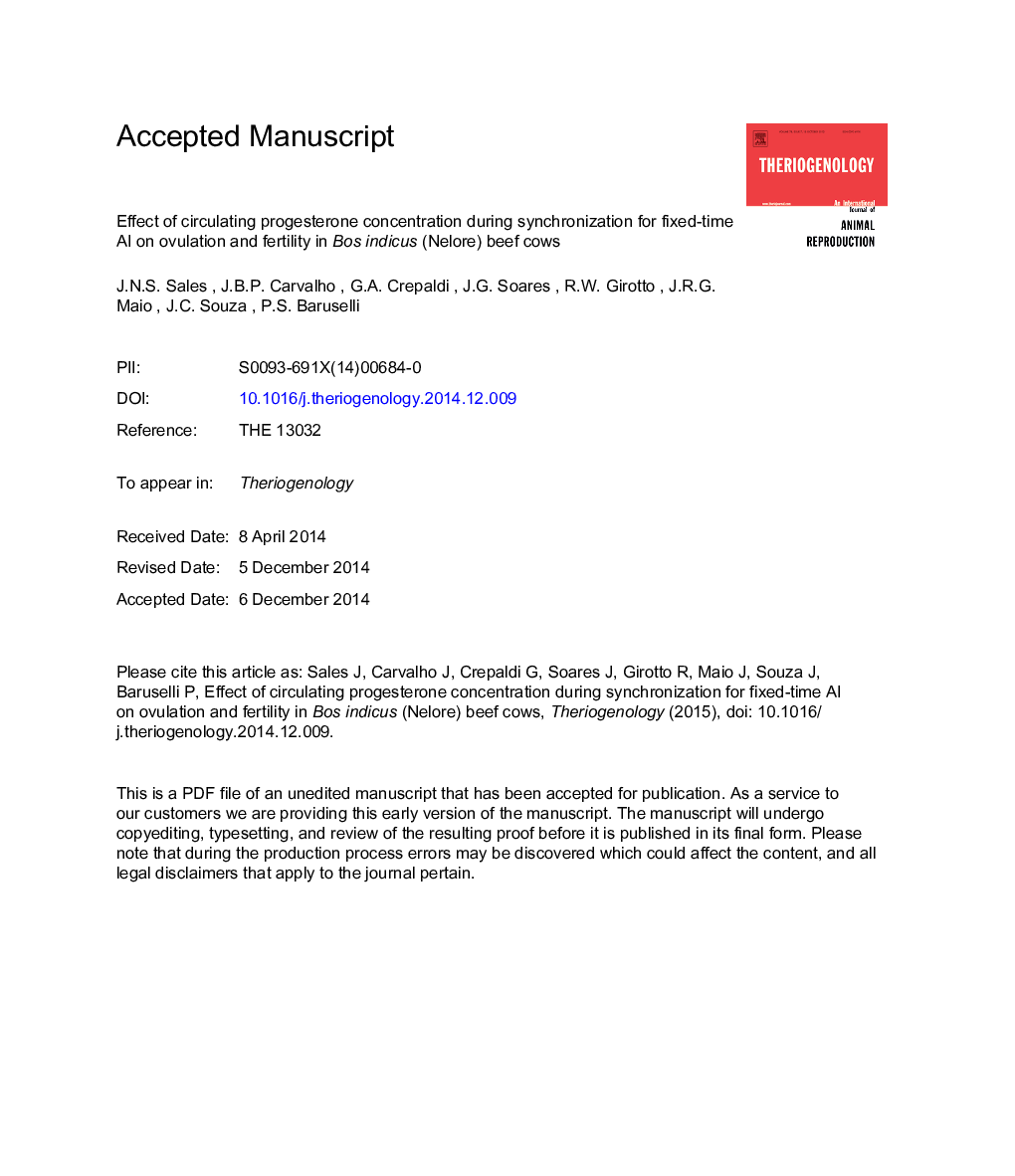| Article ID | Journal | Published Year | Pages | File Type |
|---|---|---|---|---|
| 10891810 | Theriogenology | 2015 | 25 Pages |
Abstract
Four experiments were designed to evaluate the effect of different circulating progesterone (P4) concentrations during a synchronization of ovulation protocol for the timed artificial insemination (TAI) of Bos indicus (Nelore) beef cattle. In the first trial, 13 ovariectomized Nelore heifers were randomly allocated into one of three groups using new P4 devices (New; 1.0 g P4), previously used P4 devices for 8 days (Used1x), and previously used P4 devices for 16 days (Used2x), in a crossover experimental design. The circulating P4 concentrations during the P4 device treatment were lower for Used1x (2.3 ± 0.1 ng/mL) and Used2x (2.0 ± 0.1 ng/mL) than those for New (3.8 ± 0.2 ng/mL; P = 0.001). In the second trial, the ovarian follicular dynamics of 60 anestrous cows were evaluated after the cows received the treatments described previously (New [n = 20], Used1x [n = 20], and Used2x [n = 20]). During the insertion of the P4 device, the cows were administered 2.0-mg estradiol benzoate. Eight days later, the P4 device was removed, and the cows were administered 0.53-mg sodium cloprostenol, 300 IU eCG, and 1-mg estradiol cypionate. There were no differences among the groups during the interval from P4 device removal to ovulation (73.7 ± 2.9 vs. 69.8 ± 2.4 vs. 68.4 ± 2.3 hours) or regarding the ovulation rate (70.0% vs. 80.0% vs. 85.0%). However, the maximum diameter of the largest follicle was greater (P = 0.06) in the Used2x (15.3 ± 0.4 mm) than that of New (13.5 ± 0.8 mm) and Used1x (14.9 ± 0.5 mm). In experiment 3, 443 anestrous cows were randomly assigned into one of the three treatments (New [n = 144] vs. Used1x [n = 167] vs. Used2x [n = 132]) and received a TAI 48 hours after the P4 device removal. The diameter of the largest follicle during the device removal (10.7 ± 0.3 vs. 11.2 ± 0.2 vs. 11.3 ± 0.3 mm) and the 30-day pregnancy rates (51.4% vs. 53.9% vs. 43.2%) did not differ among the experimental groups. In experiment 4, a field trial with 593 B indicus (Nelore) cows was conducted to evaluate the pregnancy per AI using different levels of P4 in a TAI protocol (New [n = 189] vs. Used1x [n = 203] vs. Used2x [n = 201]). The pregnancy per AI was similar between the treatment groups (63.5% vs. 57.6% vs. 62.7%). In conclusion, the low circulating P4 concentrations that were released from a used P4 device efficiently controlled the ovarian follicular growth and exhibited no detrimental effects on the pregnancy rates of the B indicus (Nelore) beef cattle.
Related Topics
Life Sciences
Agricultural and Biological Sciences
Animal Science and Zoology
Authors
J.N.S. Sales, J.B.P. Carvalho, G.A. Crepaldi, J.G. Soares, R.W. Girotto, J.R.G. Maio, J.C. Souza, P.S. Baruselli,
